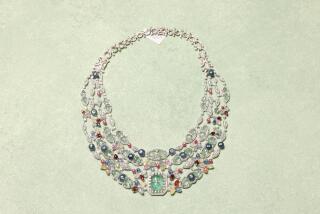Grading Is Critical in Setting Issue Price
- Share via
Question: Do you have the address of the American Numismatic Assn.? Do you have a list of reputable and bona fide rare coin dealers in Southern California? Can you tell me if ANACS, PCGS or NCI (grading services) is acceptable in the rare-coin industry? Which one is most acceptable?--R.L.
Answer: The question of coin grading will probably always be with us. The reason it’s so vital is that prices are often determined by the grading of a coin. If a coin is overgraded, it will sell for more than it’s worth, and the buyer most likely will take a loss when the coin is eventually resold. Collectors can protect themselves by purchasing coins with a buy-back guarantee. As long as the dealer remains in business, then the collector has some protection.
There are about a dozen recognized grading services. Most dealers, however, still prefer to grade coins personally, because grading is an art, not a science. There is plenty of room for difference, and sometimes that difference can amount to thousands of dollars. If a dealer buys a certified coin that is overgraded, he may well sell the coin at a higher price using someone else’s grading to justify the price. If the coin is undergraded, the dealer may remove the coin from its certification holder and regrade the coin higher with his own guarantee.
That’s why it’s important for a collector to be as knowledgeable about grading as possible.
As for a list of “reputable” dealers--I don’t have one, and I don’t believe it’s possible to assemble such a list. That doesn’t mean there aren’t such dealers. It’s just that you need to develop a personal rapport with dealers. They are entitled to a profit, but like any businessman they’ll only succeed if they treat customers properly. It’s as difficult to recommend a “reputable” coin dealer as it would be to recommend a stockbroker, lawyer, doctor or auto mechanic.
The American Numismatic Assn., incidentally, is located at 818 N. Cascade Ave., Colorado Springs, Colo. 80903-3279. Memberships are $21 annually for adults. Memberships include a monthly publication, the Numismatist.
Q: I am in possession of two German 5-mark silver pieces, one dated 1895, the other 1903. Do these coins have any special value?--P.McP.
A: Your German coins are worth about $10 each.
Q: I have an 1890 silver dollar in excellent condition. Can you tell me its approximate value? I also have pennies of 1863, 1890, 1808 and 1903. Are any of these worth more than a penny?--E.H.
A: Your dollar is in the $10-to-$30 range. Your Indian-head cents are in the $1- to $3-and-up range, depending upon condition.
Q: I don’t collect coins but have recently come into possession of five 1-cent U.S. 1943-S uncirculated steel coins. Are these of any value?--R.P.J.
A: Wartime cents such as yours retail at $3.50 each. If your coins are indeed uncirculated, you could expect to receive about $2 each from a dealer.
Q: I have a Tribute penny in my possession and am wondering if it could be authentic. It was found outside a large hotel in Los Angeles. If it is real, how much would it be worth, and how would I go about selling it?--S.S.
A: The so-called Tribute penny is actually a common Roman denarius. These coins circulated in the Roman province of Judea during the time of Christ. It was named a Tribute penny because the Romans imposed an annual poll tax of one denarius on each citizen. The coin is generally identified as a denarius of the Emperor Tiberius, with a seated figure of the Empress Livia on the reverse. These coins do not have much collector value. Check with a coin dealer for the best offer.
Q: I have a 1914 United States $20 gold coin. Will you tell me its value? It’s uncirculated.--E.D.
A: Uncirculated coins range from Mint State 60 to Mint State 70. Because few are in the MS-66 to MS-70 category, your double eagle is probably in the MS-60 to MS-65 range. On the low side, your coin would be worth about $675; on the upper end, it would be worth about $4,000.
Coin News
More than $2.9 million was realized at the Bowers and Merena sale of the Baron von Stetten-Buchenbach and Harvey E. Smith collections last month. Highlights included $57,200 for an 1895 proof set; $27,500 for an 1879 Flowing Hair Stella, Proof 60; $5,500 for an 1880 gold $1, MS-65; $1,980 for a 1916-D MS-64 Liberty Walking half dollar; $1,980 for a 1925 Fort Vancouver commemorative half dollar graded MS-64; $3,190 for a 1922 Grant gold dollar, without star, MS-64, and $6,160 for a 1936 proof set. Copies of the catalogue, including prices realized, are available for $15 from Auctions by Bowers and Merena, Box 1224-NR, Wolfeboro, N.Y. 03894.
More to Read
Inside the business of entertainment
The Wide Shot brings you news, analysis and insights on everything from streaming wars to production — and what it all means for the future.
You may occasionally receive promotional content from the Los Angeles Times.










